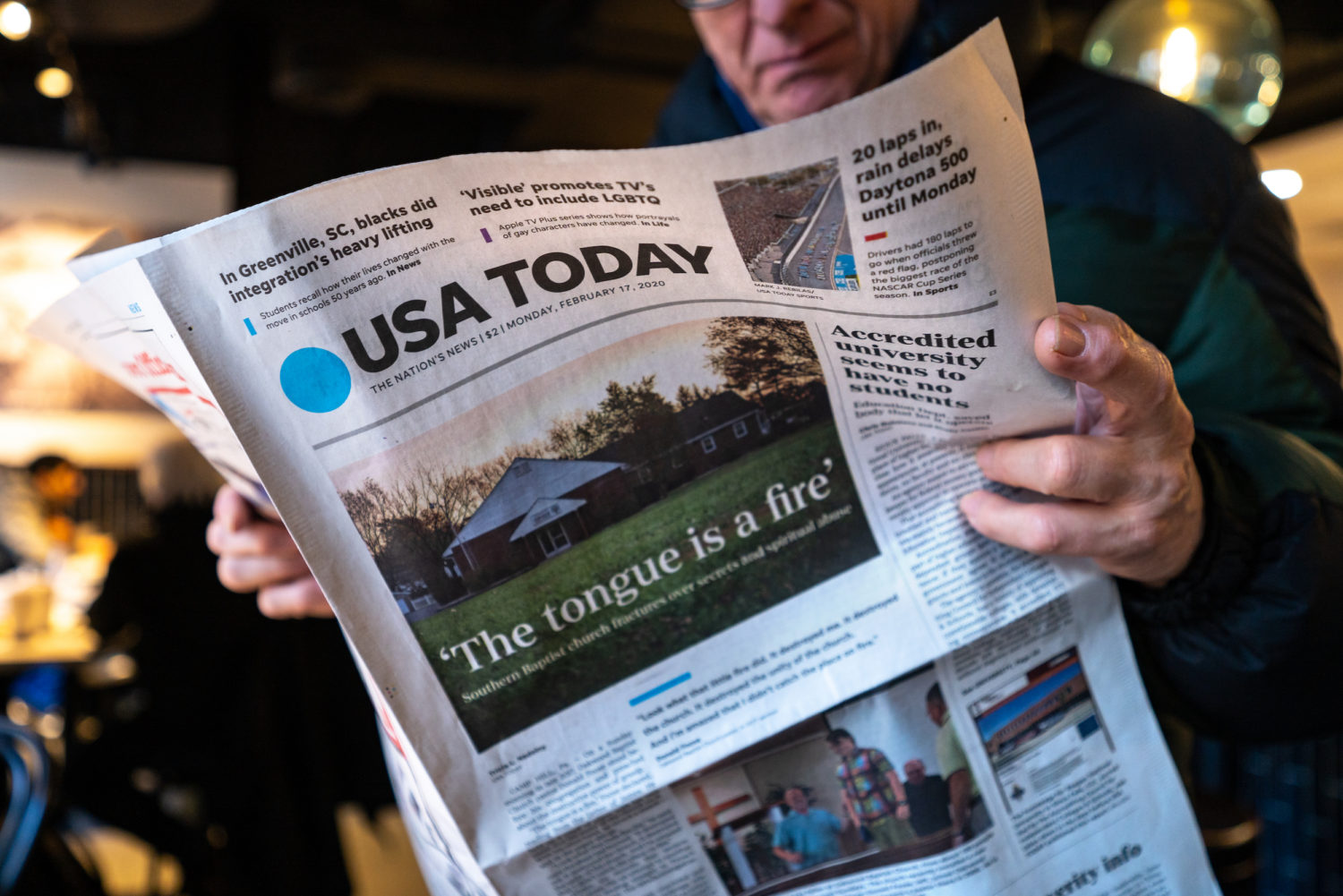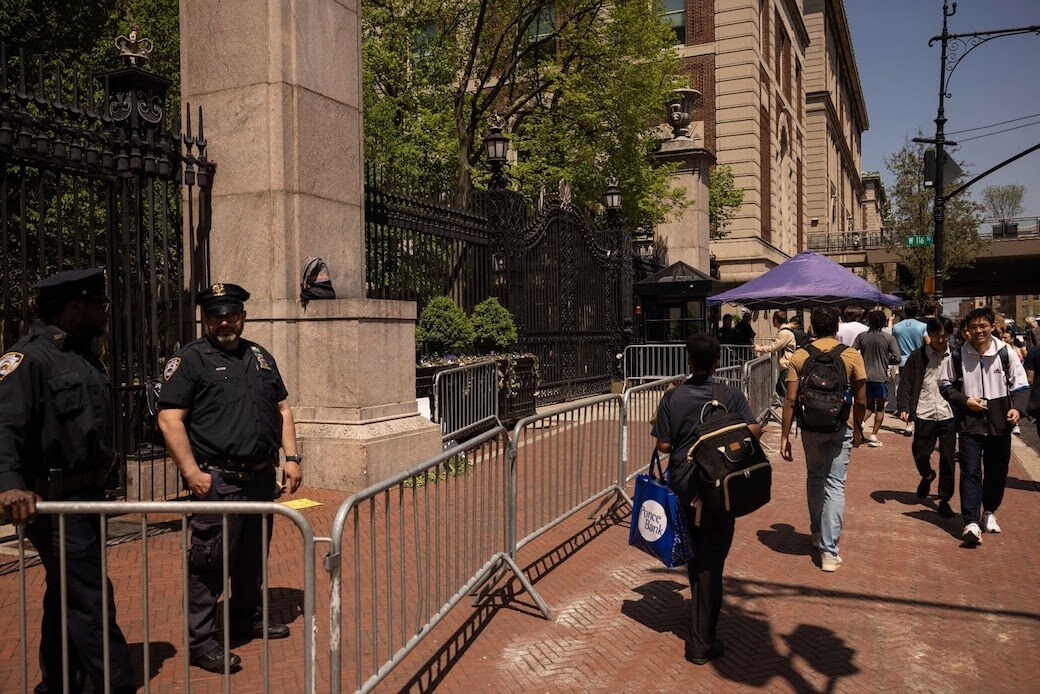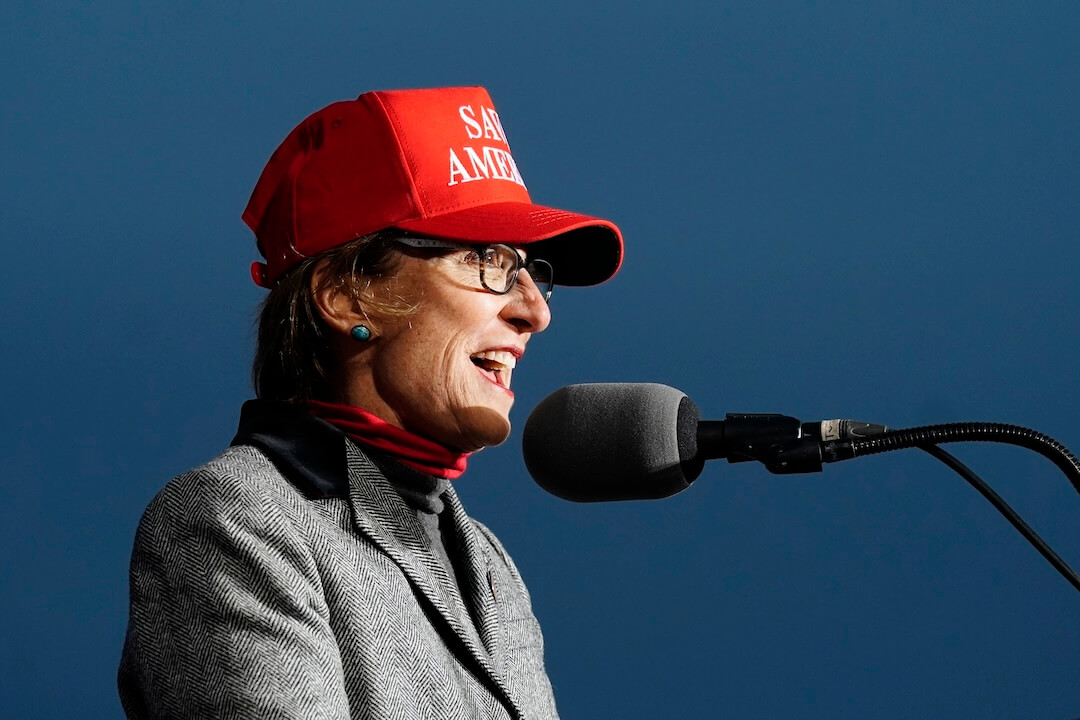I was wrong, wrong, wrong. In an October 2019 article, I predicted in slightly hedged fashion that USA Today’s print edition would fold within two years as Gannett and GateHouse completed a merger of their 250-plus regional titles.
Fast forward to May 2022, and that hasn’t happened. USA Today’s print revenues do make up an ever-shrinking share of the total, as Gannett pursues a quicker pace of digital transformation. There are no signs, though, that management plans to kill the print version anytime soon.
What’s the business case for continuing? I asked Maribel Perez Wadsworth, USA Today publisher and president of news for Gannett.
“The print edition of USA Today is a profitable product,” she replied, “which we will continue to publish as long as readers want it, and it continues to make financial sense.”
Several times in a half-hour interview, Wadsworth alluded to a second reason — branding.
USA Today and the rest of the company are gradually transitioning to “a largely digital business,” she said. Still, a print front page and the traditional newspaper organization by sections are “a very recognizable part of our brand.”
Hotel distribution figures into the brand equation in another way. For most of its 40 years, a big part of USA Today’s identity was as the traveler’s newspaper. You could count on finding a copy outside the door of your room when you woke up.
These days, participating hotels are much more likely to leave stacks at the front desk or a breakfast area. Some are taken, some not. But those print papers remain “a nice billboard for USA Today,” Wadsworth told me. “People think about it, even if they don’t take a copy.” Associations with past travel experience tend to be positive, so even that quick look is a plus for USA Today.
Hotel distribution took a big hit during the pandemic, Wadsworth acknowledged, and that has accelerated changes in USA Today’s business model.
When I wrote my October 2019 article, the most recent Alliance for Audited Media publisher’s statement showed paid hotel copies at 342,000. In the two most recent six-month reports, that total had fallen to 35,000, barely a tenth as much.
Wadsworth said that she expects some bounceback as business and personal travel resume, but not to the old levels. (Hotel chains pay a reduced rate for the papers and can get credit for copies not taken.)
The other two components of paid circulation — individually paid subscriptions and single-copy sales — have been falling, as at most newspapers, but much more slowly.
In the publisher’s statement for the six-month period ended March 31, the average total for paid print subscriptions was 73,000, down roughly 6% from the six months prior. Single-copy sales averaged 41,000, down nearly 20%.
Two other factors are altering where USA Today’s print operation fits. It has only been a year since USA Today put in a partial paywall for premium articles and began pushing paid digital-only subscriptions. (The regional papers had done so earlier.)
Some paying readers can cut their costs by switching over from print to digital. “That’s a possible effect,” Wadsworth said, “but we’re not trying to move people to digital” in that way.
At both USA Today and the regionals, where Saturday print editions are being phased out, the company has been refining and promoting its e-replica edition. E-editions mostly duplicate a day’s print product. They also can be offered on days when there is no print version and updated into the evening any day to include late sports scores and the like.
Gannett has decided to leverage its national/regional product mix in an ingenious variation. Starting in February, subscribers to USA Today digital can also access regional e-editions that interest them — any of the more than 200 publications across the country in the USA Today network — and vice versa.
It is a nice incentive for digitally inclined readers to subscribe.
Gannett does not break out results by property, so the finances of USA Today are opaque.
Multiply the individually paid print subscription number of 73,000 by the stated $350 a year rate and that would yield roughly $26 million in a year. At $2 a copy, on USA Today’s five-day-a-week print schedule, that would be roughly another $21 million. That’s small potatoes for a company with $3 billion-plus in annual revenues.
Gannett head of corporate communications Lark-Marie Anton disputed my calculations but wouldn’t say why. “These estimates are unsubstantiated and speculative,” she emailed. “I am not going to comment on (them).”
Print and digital USA Today ads can be bought together or in combination with regional papers. Wadsworth said that across the network, including both print and digital, audience as a share of revenues is increasing but advertising still contributes slightly more.
She also discussed the expense side, but only in a general way. “We are assessing our contracts with printing and distribution partners all the time,” Wadsworth said. USA Today is available in all 50 states. Gannett has its own printing plants all over the country, but needs to outsource in some places.
As I have written before, Gannett is well into a decadelong program to integrate editorial operations at USA Today and the regionals. National stories are offered down to the regionals, and the best from the regionals flow up to USA Today. There are regular opportunities to collaborate on investigations and other projects. Under current editor-in-chief Nicole Carroll, the USA Today Network, along with The Arizona Republic, won its first Pulitzer Prize in 2018 for explanatory reporting on President Donald Trump’s border wall.
With all that in place, the added cost of producing the editorial content and design for print and e-edition versions of USA Today, I would think, would be modest.
(Wadsworth began her career as a reporter at the Rockford Register Star in Illinois, but was promoted from news management roles at The News-Press in Fort Myers, Florida, to a strategy job at Gannett headquarters in 2014. There she has been the business-side driver of digital transformation.)
Looking at an e-edition of USA Today, before talking with Wadsworth, it seemed to me that nearly all the stories were staff-written with a smattering of Associated Press wire material. Except for the page of shorts from all 50 states, a staple since Al Neuharth launched USA Today in the fall of 1982, stories seemed to run longer than I had remembered.
That impression is right, Wadsworth said. For special events like the Olympics and some other big international stories, USA Today sends its own staff but otherwise draws on the AP.
“With the elevation (of staff capacity) over the years,” she said, “we are doing more analysis, and we can go deep when we need to.” Both of those factors have led to greater story length.
Wadsworth said that she wonders whether the pendulum may have swung too far. “I hope we get back to (adding) more short-and-to-the-point (stories). Those are accessible — tight writing and graphics always help.”
Returning to how I got the story of USA Today’s print edition wrong two-and-a-half years ago: The two sources I relied on seemed to have access to the highest level of thinking at the merging company as it was looking for $2 billion in economies. But their intelligence proved mistaken.
I continue to wonder about the sustainability of USA Today in print, operating on a shrinking circulation base across such a huge area. On the other hand, a paid print circulation of just under 150,000 is not nothing. Gone are the days of 2 million-plus circulation, but the current figure puts it ahead of all but the other three big national papers.
The cost of paper, printing and distribution keeps going up. At some point, the revenue and expense lines will almost certainly converge in a bad way. But probably, I’ll concede, not anytime soon.







